CISSAMPELOS
Cissampelos L., Sp. Pl. 2. 1031. 1753; Gen. Pl. ed. 5: 1138. 1754; Hook. f. & Thoms. in Hook. f., Fl. Brit. Ind. 1: 103. 1872; T. Cooke, Fl. Bomb. Pres. 1: 1103; Troupin in Turrill & Mine- Redhead, Fl. Trop. East Afr. 23. 1956; Forman, Kew Bull. 22: 355. 1968; Bot. Surv. India vol. 1; Fl. China 7: 27. 2008; Fl. North Amer. @ eFloras.org vol. 3; Fl. Pak. @ eFloras.org p. 1.
Suberect or twining dioecious shrubs. Leaves simple, cordate or reniform or orbicular, peltate or petiole inserted at base of blade, emarginate, palmately veined, stem and leaves densely pilose. Male inflorescences axillary, corymbose cymes, pedunculate. Female inflorescences fascicles from axils of normal leaves, individual flowers in axils of reduced leaves or overlapping accrescent orbicular bracts upon secondary axillary branches; in axils of each bract 3-9 flowered cymules. Male Flowers: Sepals generally 4, obovate. Petals 4, connate. Stamens 4, anthers monothecous, connate on a staminal column (Synandrium) formed by fused filaments, anthers dehiscing transversely. Female Flowers: Sepal 1, rarely more. Petal 1 rarely 2 or 3, opposite to sepal/s, adnate to bracts. Staminode 0. Carpel 1, ovary asymmetrically pouched, pilose; style short; stigma 3-5 lobed. Fruit a subglobose drupe with hairy or glabrous exocarp, a fleshy and thin mesocarp and a dorsally compressed, tubercled and transversely ribbed endocarp; style scar basal. Seeds bent like horseshoe, embryo elongate, terete; albumen ruminate; cotyledons flattened.
30 species
Cissampelos pareira var. hirsuta
Cissampelos pareira L. var. hirsuta (Buch.-Ham. ex DC.) Forman, Kew Bull. 22: 356. 1968; Babu, Herb. Fl. Dehradun 45. 1977; Dhaliwal & Sharma, Fl. Kullu Dist. 114. 1999; Kaur & Sharma, Fl. Sirmaur 126. 2004; Singh & Sharma, Fl. Chamba Dist. 147. 2006; Fl. China @ eFloras.org 7: 27; Fl. Pak. @ eFloras.org p. 3; C. hirsuta Buch.-Ham. ex DC., Syst. Nat. 1: 535. 1817; C. pareira auct. non L.; Hook. f. & Thoms. in Hook. f., Fl. Brit. Ind. 1: 103. 1872; Collett, Fl. Siml. ed. 2: 19. f.7. 1921 (Reprint 1983); Parker, For. Fl. Punj. ed. 1: 9. 1918 (Reprint 1973).
Perennial, a softly pubescent or tomentose twining dioecious shrub. Stem branches striate, densely pubescent. Leaves alternate; petiole 4-10 cm long, densely pubescent; leaf blade 2.5-12 cm long and wide, orbicular or reniform, peltate, base cordate or truncate, apex usually obtuse, emarginate, mucronate, palmately 5-7-nerved, veins slightly prominent abaxially, pubescent or tomentose on both surfaces. Flowers unisexual, minute, yellowish. Male Flowers: Flowers ca. 3.5-4 mm across, in pendulous pedunculate branched (corymbose) cymes clustered in leaf axils or on long axillary shoots with small leaves or leaf- like bracts and small axillary cymes; pedicels filiform. Sepals 4, ca. 1.5 mm long, obovate-oblong, concave, spreading, pilose outside. Petals 4, united in a shallow 4-lobed cup, pilose outside, less than half as long as sepals. Stamens 4; filaments united into a very short, ca. 1 mm long staminal column with top dilated and peltate; anthers 4, monothecous, connate encircling the top of staminal column, dehiscence transverse. Female Flowers: Pedicellate, pedicels longer or as long as flowers, pubescent; clustered in cymules in axils of overlapping suborbicular, mucronate, pubescent or tomentose bracts crowded in long axillary dense racemes, up to 10 cm long, rachis densely pubescent; bracts persistent, 0.5-2.5 mm x 0.5-2.5 mm. Sepal 1, broadly ovate or ovate-oblong, ca. 1.5 mm long, pubescent outside. Petal 1, opposite the sepal, suborbicular or subreniform, smaller (nearly half as long as sepal) and deeply lobed. Staminode 0. Ovary 1, pilose; style short, glabrous; stigma usually 3-fid. Drupe usually globose, 5-7 mm in diameter, compressed, hairy, scarlet; endocarp transversely ridged (9-11), horseshoe-shaped.
Common Names:Velvet leaf, False Pareira, Brava, Abuta, Pareira Root, Barbasco; Akanadi, Batindu, Katori (Hindi)
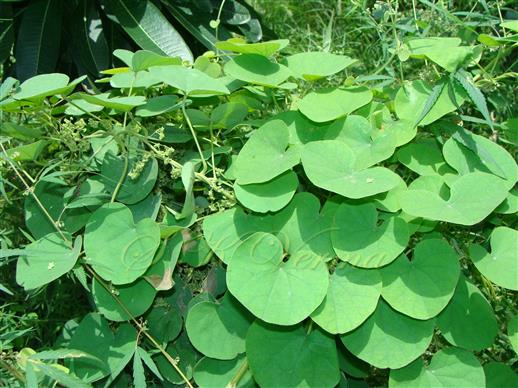
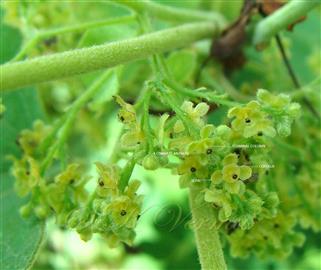
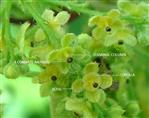

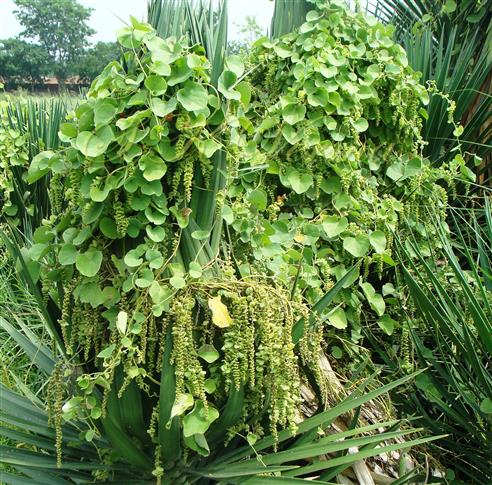
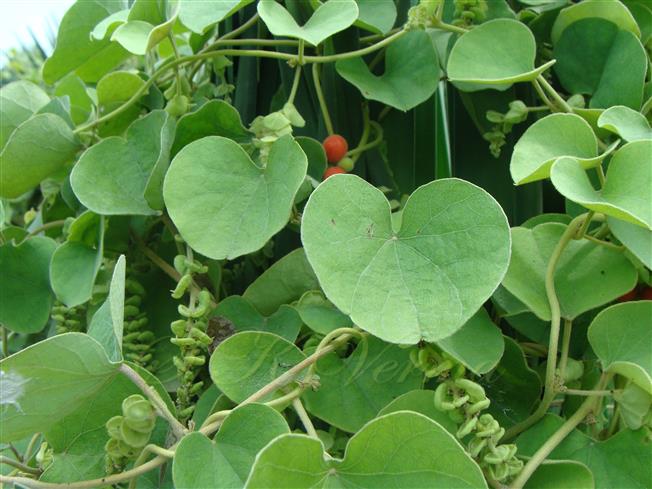
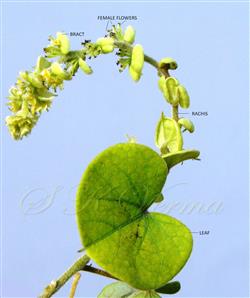
.jpg)
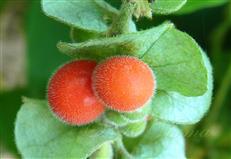




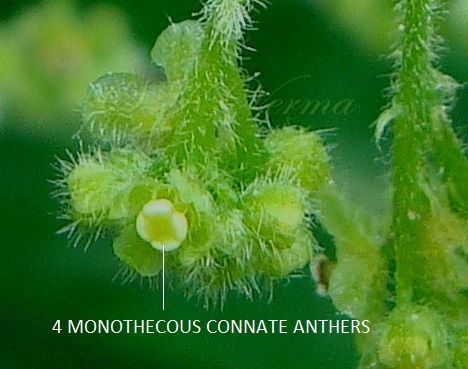



.jpg)
